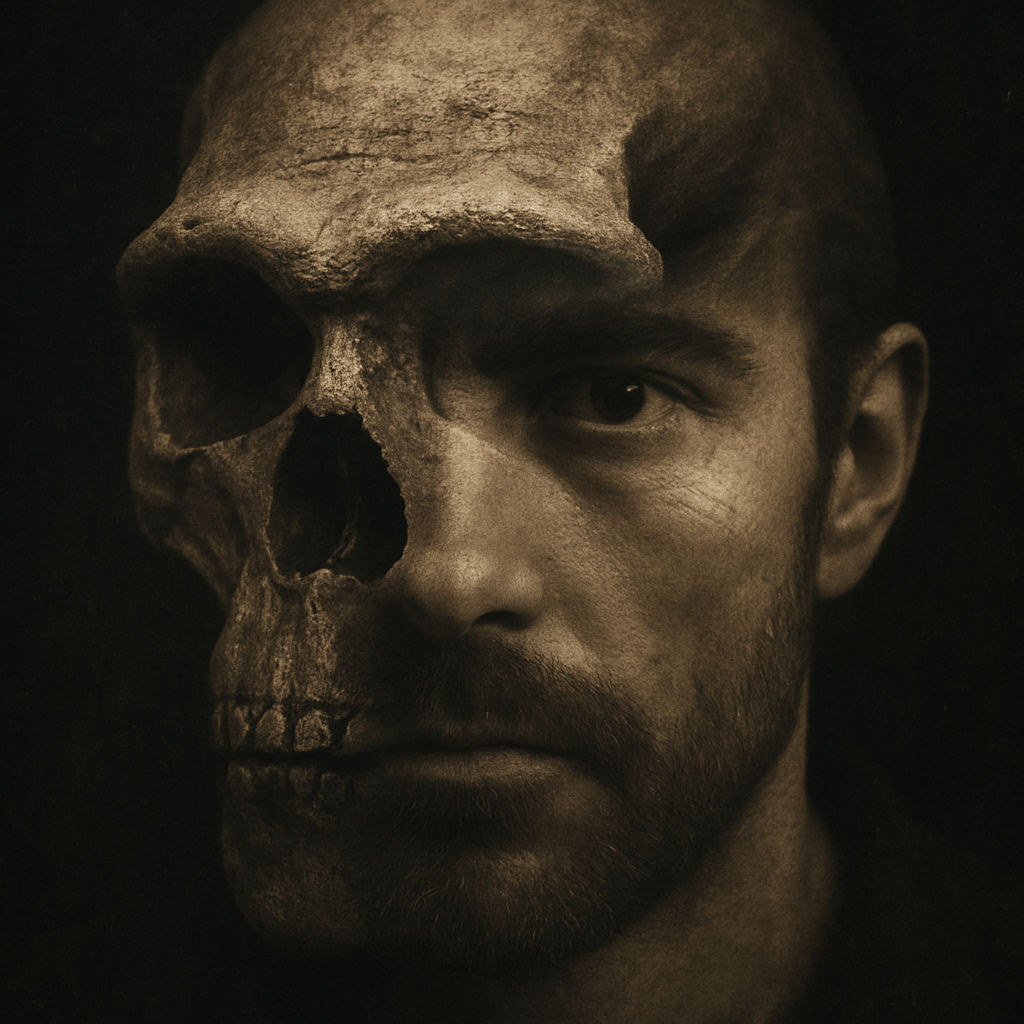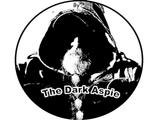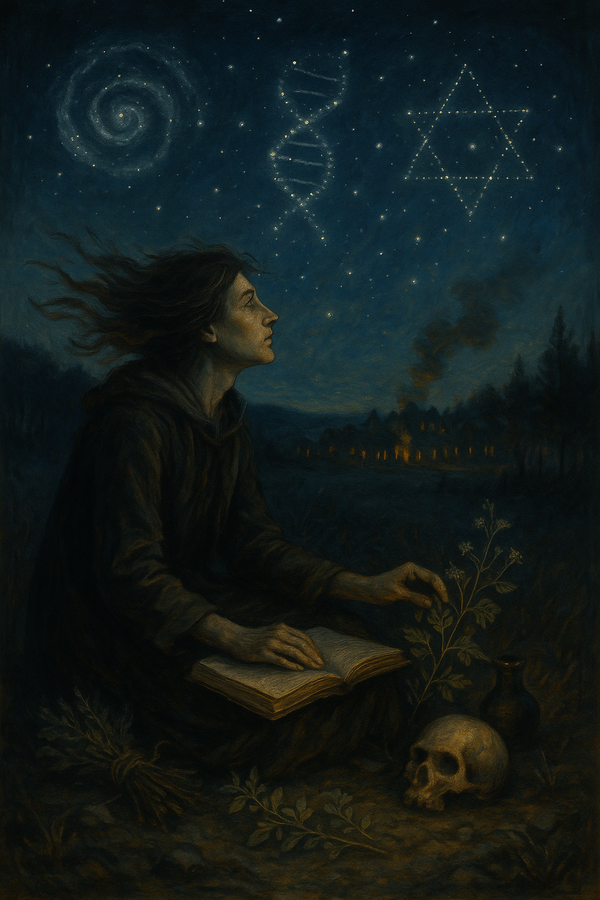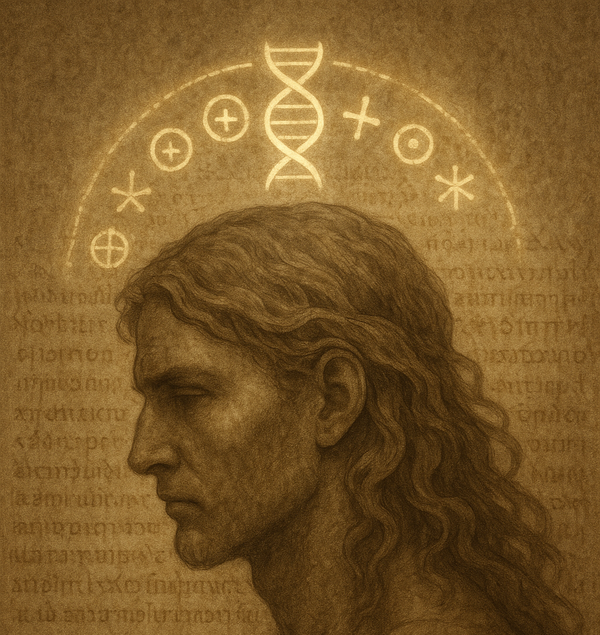The Neanderthal Within: Autism, Evolution, and Survival

💡 What if the way your brain works isn't a flaw—but a fossil?
The Neanderthal Within: Autism, Evolution, and Survival
Introduction: The Mind as Artifact
An ancient thread, woven into the tapestry of modern humanity, carrying with it the cognitive strengths of a lineage long extinct. New genetic and archaeological research suggests this may not be just poetic metaphor, but scientific reality. For example, a 2014 study by Sankararaman et al. mapped the genomic landscape of Neanderthal ancestry in modern humans, highlighting regions affecting neurological traits and sensory processing.
For those of us who think differently—those with autism, for example—our neurological wiring may echo the mental rhythms of an older branch of human ancestry: the Neanderthals.
This article explores a growing hypothesis: that certain autistic traits may not be modern anomalies or dysfunctions, but rather ancient cognitive styles preserved through interbreeding. If true, it redefines autism not as a pathology, but as an evolutionary inheritance—a vestige of a brain built for survival in harsh, solitary, pattern-driven environments. And it changes how we should view neurodivergent minds in the present.
Neanderthal DNA in Modern Humans
Roughly 1–2% of the DNA in non-African populations today originates from Neanderthals. This interbreeding occurred between 40,000–60,000 years ago as Homo sapiens migrated into Eurasia. Far from being inert remnants, these Neanderthal genes are active, influencing traits from skin tone and immune response to circadian rhythms and neurological wiring.
Some of these genes are associated with increased sensitivity to stimuli, altered pain thresholds, and unique serotonin transport mechanisms—features that, in modern humans, often correlate with autism spectrum traits. Research published in Molecular Psychiatry (Pauly et al., 2024) identified 25 Neanderthal-derived variants enriched in autistic individuals. Among these, variants affecting the SLC6A4 gene—linked to serotonin transport—and the CADPS2 gene—associated with synaptic regulation—stood out for their roles in sensory processing, emotional regulation, and cognitive function. These genetic fingerprints help bridge the evolutionary gap between our ancestors' adaptations and traits now associated with neurodivergence.
This data invites a provocative question: did Neanderthal cognition align more closely with what we now recognize as neurodivergent thinking?
The Autism-Neanderthal Hypothesis: Survival of the Specialist
Imagine a world of ice, danger, and isolation. In such an environment, a brain that could detect subtle patterns in animal movement, withstand solitude, and hyper-focus on tasks like tool-making or shelter construction would be invaluable. Traits we associate today with autism—deep focus, sensory sensitivity, nonverbal cognition—may have been strengths in that world.
This theory doesn't suggest that Neanderthals were autistic in a clinical sense. Rather, it posits that they may have exhibited traits that later became associated with autism in a different societal context. These traits were not defective; they were adaptive.
Modern society prioritizes social navigation and verbal fluency. Ancient survival often demanded pattern recognition, attention to detail, and comfort in silence. This mismatch may explain why what was once a strength is now misunderstood as a disorder.
The Pictish Puzzle: Cognitive Echoes in Highland DNA
For those with Scottish ancestry, particularly from the Highlands or believed Pictish lineages, the picture becomes even more interesting. The Picts—tribes of early Scotland known for their symbolic stonework, solitary settlements, and resistance to Roman assimilation—have long evoked mystery.
Recent studies from Stockholm University show that the Picts were not a separate race but a culturally distinct group rooted in earlier British populations. Their relative genetic isolation could have helped preserve not just lineage, but cognitive styles. The prevalence of visual symbolism, pattern-based communication, and solitary craftsmanship may align with autistic cognitive preferences.
Could the Picts, like the Neanderthals before them, represent a preserved cognitive archetype? Archaeological evidence such as symbolic stone carvings and the potential use of early symbolic systems, possibly influenced by or paralleling Ogham, suggests a culture deeply engaged in visual and patterned communication—traits that may align with autistic cognition. And could some modern Scots carry that neurological echo in their DNA?
Giants, Wild Men, and Healers: Neurodivergence in Myth
Our ancestors may have encoded their encounters with autistic minds in mythic form—figures like the Green Man, the Wild Man of the woods, or the Nephilim may represent archetypes of neurodivergent individuals preserved in oral tradition and legend.
Throughout world mythology, tales persist of beings who lived on the fringes—giants, wild men, hermits, and uncanny healers. Some were feared, others revered. But many shared common traits: silence, symbolic thinking, heightened senses, and a separation from ordinary society.
In biblical texts, the Nephilim are described as hybrid beings of great size and knowledge. In Celtic lore, the "Old Ones" or "Green Men" appear as nature-bound watchers, living apart but influencing the world. Even the Norse völva and seers were often solitary, odd, or viewed with suspicion.
These stories may not describe literal giants or spirits, but instead ancestral memories of people who thought and behaved differently—perhaps even the neurodivergent.
From Reverence to Persecution: The Salem Lens
Fast forward to the 17th century: a time of rigid dogma and mass fear. The Salem Witch Trials and similar purges across Europe often targeted individuals—mostly women—who were socially awkward, spoke to themselves, worked alone with herbs or symbols, or lacked typical emotional expression.
In modern terms, many of these victims might be described as neurodivergent. The same traits that may have once meant survival or sacred roles—solitude, pattern obsession, emotional detachment—were now condemned as signs of possession or witchcraft.
The transition from reverence to persecution reflects a societal shift away from survival-based adaptation toward conformity and control.
Reframing Autism: Inheritance, Not Illness
By looking at autism through this evolutionary lens, we challenge the dominant narrative that casts it as a disorder. Instead, we might view it as a relic of a successful adaptation—evidence of an ancient cognitive type that persists in a world that no longer values it.
Autistic individuals often exhibit heightened pattern recognition, deep focus, and a unique form of emotional logic. These are not broken functions; they are different functions—ones that may have once been central to human advancement.
If we embrace this perspective, we open up new ways to support neurodivergent individuals—not by forcing them to conform, but by honoring the evolutionary purpose behind their minds.
🧬 Final Thoughts: Fossils in the Flesh — The Legacy We Carry
We are not only the sum of our culture but also of our ancestors. To understand the future of neurodiversity, we must first honor its past. In our bones, our blood, and perhaps our brains, we carry their struggles, their adaptations, and their perceptions. For some, that inheritance runs deeper—echoing with the logic of a world that no longer exists.
Autism may be one such echo. Not a flaw. Not a dysfunction. But a signal—a remnant of the Neanderthal within.
🔗 Next in the series:
- [ ] The Nephilim Hypothesis: Myths of Hybrid Minds
- [ ] Picts, Patterns, and the Visual Brain
- [ ] The Burnings: Autism and the Witch Trials
What do you think?
Could your cognitive wiring be an evolutionary echo?
Share your thoughts—and stories—below.
📚 Sources:
- Sankararaman, S., et al. (2014). The genomic landscape of Neanderthal ancestry in present-day humans. Nature
- Stockholm University. (2022). DNA Researchers trace the origin of the Picts. su.se
- National History Museum. (2018). Hybrid fossil of Denisovan-Neanderthal child. nhm.ac.uk
- Reddit. Discussion on autism and Nephilim. r/autism




